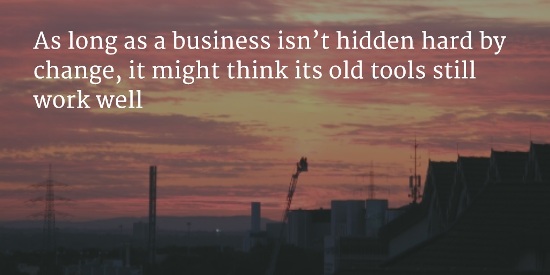There is a lot of critique of strategic planning around. The heavy reliance on analysis has been said to favor measurable outcomes and it would be inappropriate for our unpredictable environment. This critique is not new, but it is constantly renewed. It is all the more surprising that strategic planning doesn’t get poor grades in practice.
Bain & Company published their 2015 Management Tools and Trends survey this summer (conducted in 2014). In this survey, they rate 25 popular management tools by usage and satisfaction every two years. The survey is based on more than 13,000 participants from all around the world. Thus, it should give a fairly reliable view on how these tools prove their worth in practice.
In this year’s survey the first five places by usage go to
- CRM (usage rate 46%)
- Benchmarking (44%)
- Employee engagement surveys (44%)
- Strategic planning (44%)
- Outsourcing (41%)
Obviously, strategic planning is still among the most popular management tools around.
In terms of satisfaction, strategic planning ranks on place seven (grade 3.93 with 5.0 being highest possible grade). The tool with the highest rank for satisfaction is Big data analytics (grade 4.01) and the tool with the lowest rank is Outsourcing (grade 3.61). This isn’t a bad result for strategic planning at all.
We may now wonder if the critique of strategic planning is mainly existent in management writing. Or do managers surveyed have a false image of themselves and their businesses?
Another finding from the Bain study supports this assumption:
Asked for their view on current management trends, 75% of respondents agreed to the statement “Our ability to adopt to change is a significant competitive advantageâ€. This is the statement with the highest approval rate. Bain comments on this
“Can three out of four firms really be poised to outperform? Clearly, many companies have worked hard to cut costs and improve efficiency throughout the downturn, but we see a significant risk in 75% of respondents believing that they have a competitive advantage relative to their peers. Statistically, it doesn’t add up. (A more realistic number is probably 25%.) Executives who believe that their companies are more competitive because sales and profits are rising in the midst of a recovery risk making some wrong moves due to complacency.â€
One cannot help thinking that managers fail to fully cope with the challenges of complexity in our business environment. They seem to struggle in making sense of the disruptive changes going on around them. It is admittedly hard to grasp what these changes mean for the individual business and what to do about them.
For lack of better approaches, they probably rely on what they are familiar with and what has worked for them in the past. As long as the business isn’t hidden hard by any disruptive change, you might think that your old tools still work well.
[bctt tweet=”As long as a business isn’t hidden hard by change, it might think its old tools still work well”]
Of course, we also have to take into account that the term “strategic planning†may comprise a wide range of approaches and processes. These may significantly differ from business to business. One can assume that at least a proportion of the respondents have already adapted their strategic planning processes to the latest environmental challenges. This idea is supported by other findings of the survey:
“… this year’s findings highlight a distinct split between North American companies, which strongly prefer traditional tools, and Chinese and Indian companies, which reported greater use of new-school tools like Disruptive Innovation Labs.â€
Asian businesses seem to be more progressive in their choice of tools than their American counterparts. As it happens, the above mentioned grade of satisfaction with strategic planning is only an average. The grades from Asia are significantly higher than those from North America:
- Global average: 3.93 (with 5.00 being highest possible grade)
- North America: 3.83
- EMEA: 3.89
- Asia/Pacific: 4.20
- Latin America: 3.92
It would be interesting to know if there is a difference in the strategic planning processes of Asian and American businesses and how this may look like.


October 11, 2015 at 7:55 am
One reason so many respondents in the survey view their company as poised to outperform is the tendency of individuals to be overconfident in their assessments about the future. This bias, along with the unfortunate fact that most aren’t mentally wired to chart a path into an environment of change, chaos, etc. Hence the reason that strategic planning is embraced by many (and likely not understood by an equally large number!) Good post…enjoying starting to read your material!
October 12, 2015 at 10:29 am
I totally agree with your conclusion.
In my opinion, this applies especially to those businesses that have been in existence for some time. Even if they sense that they have to adapt new approaches, it is much harder for them compared to an agile startup. Existing businesses have legacy systems and processes, collective memories and believes and so on. You are much more reluctant to make major changes on those, than on an minimum viable product.
Pingback: Strategic planning – much criticism but surprisingly high satisfaction – Globibo Media